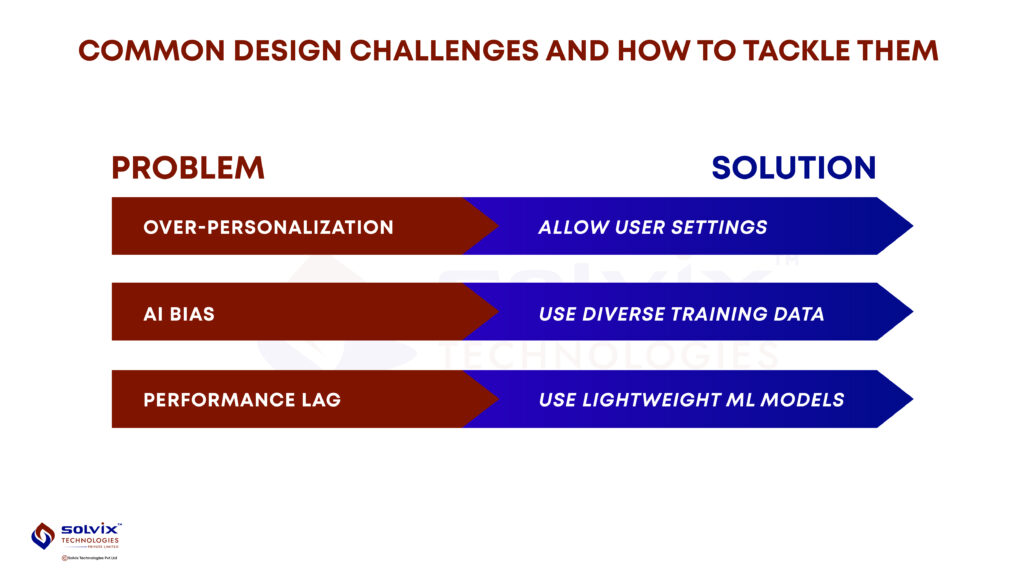No products in the cart.
Designing for the Individual: UI/UX Strategies in AI-Personalized Mobile Apps
Mobile applications have evolved far beyond static interfaces and one-size-fits-all experiences. As user expectations surge toward hyper-personalized interactions, the role of UI/UX strategies becomes pivotal. Particularly in AI-personalized mobile apps, design must respond intelligently to individual behavior, preferences, and needs — crafting an experience that feels less like software and more like a natural extension of the user’s intent.
For businesses investing in mobile app development, embracing personalization is no longer a luxury; it is essential for differentiation, engagement, and long-term loyalty.
The Rise of AI-Personalized Interfaces
Artificial Intelligence has disrupted traditional paradigms, offering an opportunity to create dynamic, self-evolving interfaces. Modern apps leverage AI to predict actions, suggest content, adapt layouts, and modify user journeys in real-time.
However, true personalization goes beyond algorithms. It demands a thoughtful UI/UX design strategy — a strategy where machine intelligence and human-centric design principles converge seamlessly. This intersection defines the future of custom mobile app development.
Understanding the User: The First Principle
Designing for the individual starts with profound user understanding. AI can gather insights, but interpreting those insights into intuitive interfaces is an art. Behavioral analytics, emotional mapping, and context-driven design are critical.
Instead of assuming broad demographics, successful applications create micro-personas based on real-time data. These micro-personas dynamically shift as the user’s interaction patterns change. An experienced mobile app development company considers user individuality from the wireframing phase itself, allowing AI-driven personalization to integrate naturally rather than as an afterthought.
Adaptive Interfaces: Beyond Static Design
Static screens are relics in AI-personalized apps. The future belongs to adaptive interfaces that morph according to the user’s behavior and environment. Whether it’s adjusting typography for readability based on ambient light, or reorganizing menu structures based on frequently accessed features, adaptive interfaces keep the experience frictionless.
Such dynamic adaptability is central to cross platform mobile app development, where consistency across devices must meet context-specific needs without compromise.
Key UI/UX Strategies for AI-Personalized Mobile Apps
1. Context-Awareness at Every Touchpoint
Design must not just react to inputs but anticipate them. Contextual cues — location, device usage patterns, time of day, even emotional sentiment analysis — empower interfaces to make intelligent decisions.
For instance, a health app offering a different set of exercise suggestions on a rainy day versus a sunny one creates a level of personalization that feels intuitive rather than intrusive. This level of nuance demands expert handling, achievable through refined mobile app development services.
2. Prioritizing Micro-Interactions
Micro-interactions — those subtle animations, haptic feedbacks, and visual cues — build emotional bridges between the user and the app. In an AI-personalized experience, micro-interactions need to be even more sensitive, acknowledging unique user behaviors.
A personalized congratulatory animation when a user meets a milestone in a fitness app, or a tailored nudge based on missed activities, makes the experience feel uniquely theirs.
3. Humanizing AI Outputs
While AI offers logic and prediction, humanizing those outputs is where custom mobile app development shines. Instead of cold notifications like “You missed your goal,” a better approach might be, “We noticed you’ve had a busy week. Here’s a gentle plan to help you ease back.”
Tone, language, and visual feedback must remain empathetic, preserving the emotional connection AI algorithms alone cannot create.
4. Privacy-Centric Personalization
Personalization must walk hand-in-hand with trust. Users today are deeply aware of data privacy. Transparent permission requests, clear value exchange, and customizable privacy controls are vital components of trustworthy UX design.
Expert mobile app development teams weave security and user control mechanisms directly into the design flow, ensuring personalization never crosses into intrusion.
5. Continuous Evolution Through AI Learning
Personalization is not a one-time achievement; it’s a living, breathing part of the application’s life cycle. AI must constantly learn and refine the user experience. Mobile app development companies specializing in AI integration plan for continuous iteration, utilizing A/B testing, cohort analysis, and machine learning refinement to keep interfaces relevant over time.
Challenges and Solutions in Personalized UI/UX

Despite its advantages, designing personalized mobile apps comes with challenges:
- Over-Personalization Risk: Bombarding users with too many AI-driven changes can overwhelm them. Solution: Gradual personalization with user-controlled settings.
- Bias in AI: Improper data training can lead to skewed personalization. Solution: Diverse datasets and ongoing bias audits.
- Performance Impact: Real-time adaptation can strain app performance. Solution: Optimization through lightweight machine learning models and efficient backend architecture.
Choosing the right mobile app development company that understands these nuances can be the difference between an app that delights and one that frustrates.
Cross-Platform Consistency in Personalized Experiences
With the surge of cross platform mobile app development, maintaining consistent yet personalized experiences across iOS, Android, web, and wearable devices is critical.
A user might start a journey on their smartwatch, continue it on their phone, and complete it on a tablet. Each interaction must reflect their personalized context without disruption. Crafting such experiences demands deep expertise in multi-device orchestration and AI-data continuity — areas where seasoned mobile app development services prove invaluable.
The Future Is Hyper-Personalized
The marriage of AI and human-centered design is shaping a future where apps no longer merely serve users but genuinely understand them.
For businesses, investing in personalized mobile app development is a strategic imperative to remain relevant in an increasingly competitive digital landscape. Success hinges not on how much AI is integrated, but on how naturally, empathetically, and invisibly it enhances the user’s journey.
The guiding mantra is clear: design not for a demographic, but for an individual — one interaction, one moment, one experience at a time.
